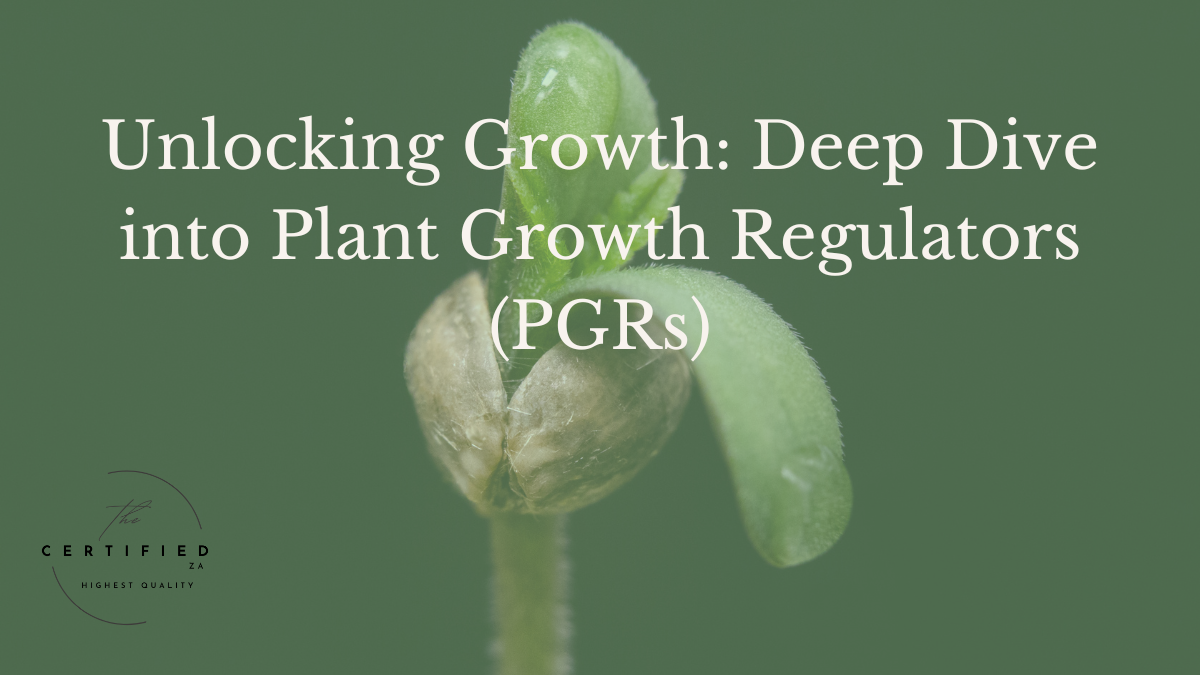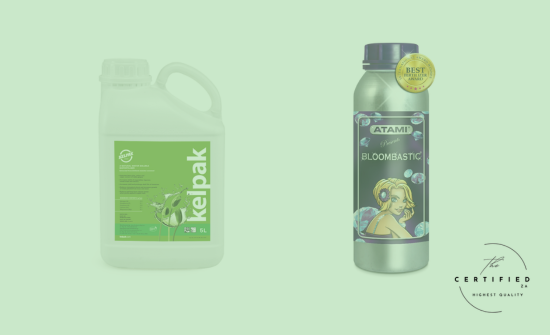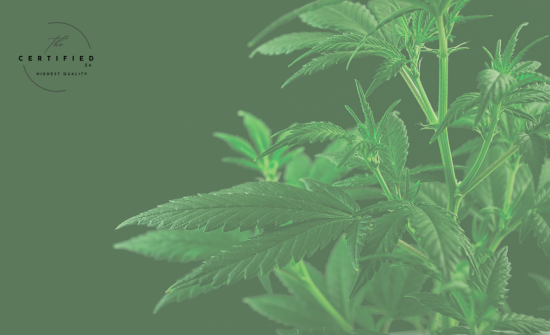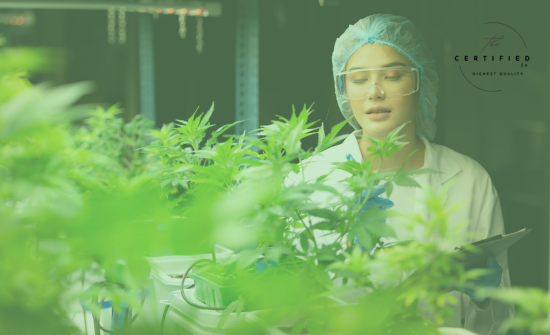
In the pursuit of optimal yields and pristine quality, cannabis cultivators are constantly seeking every advantage. While dialling in light, nutrients, and environmental control are standard practice, the world of Plant Growth Regulators (PGRs) introduces a powerful, yet often misunderstood, layer of influence. For many growers, the term “PGR” can spark confusion or even controversy. Some might unknowingly be using them through common supplements, while others might dismiss them without a full understanding of their intricate effects.
This week, we’re taking a candid look at PGRs. This isn’t about judgment, but about illuminating the science behind these potent compounds so you, as a grower, can make informed decisions in your cultivation space. We’ll explore what PGRs are, how they interact with your cannabis plants, and the critical considerations for their responsible and effective use.
What Are Plant Growth Regulators (PGRs)?
At their core, PGRs are simply phytohormones – naturally occurring chemical messengers that regulate virtually every aspect of plant growth, development, and physiological response. Plants produce these hormones internally in minute quantities, but even these tiny amounts orchestrate monumental changes, from seed germination and root formation to flowering and senescence.
The “PGRs” we discuss in cultivation refer to these phytohormones, whether they are:
- Naturally derived: Extracted from organic sources that are rich in these compounds.
- Synthetic: Chemically synthesised compounds designed to mimic the effects of natural phytohormones.
Understanding that these substances are, fundamentally, plant hormones is key. When applied externally, they can dramatically influence the plant’s natural processes.

The Master Conductors: Auxins, Cytokinins, and Gibberellins
Three classes of phytohormones stand out as the primary conductors of plant growth, each with distinct roles and complex interactions:
1. Auxins: The Architects of Direction
Auxins, such as Indole-3-acetic acid (IAA) and 1-naphthaleneacetic acid (NAA), are largely responsible for directing plant growth from the shoot apex downwards. Their key roles include:
- Apical Dominance: Auxins produced at the shoot tip inhibit the growth of lateral (side) branches, promoting a single dominant main stem. This is why “topping” or removing the apical meristem is a common technique to break apical dominance and encourage bushier growth.
- Root Development: Auxins are crucial for initiating and stimulating the growth of adventitious and lateral roots, making them vital in cloning and tissue culture processes.
- Cell Elongation: They promote the lengthening of plant cells, contributing to overall plant height.
These vital phytohormones are not only responsible for directing shoot growth and root initiation but are also deeply involved in the very earliest stages of plant architecture. Their precise transport mechanisms, involving specialised protein pathways in both the phloem and through cell-to-cell polar transport, allow them to create gradients crucial for everything from defining the apical-basal axis in early embryogenesis to guiding the differentiation of vascular tissues throughout the plant. This complex internal movement ensures that growth is organised and resources are distributed effectively, shaping the fundamental structure your plant will build upon.
2. Cytokinins: The Stimulators of Division and Lateral Growth
Cytokinins (CKs), such as 6-benzylaminopurine (BAP) and kinetin, are primarily synthesized in root tips and young, actively dividing tissues. Their main functions are:
- Cell Division: Cytokinins vigorously stimulate cell division (cytokinesis), a fundamental process for tissue formation and plant growth.
- Lateral Bud Break: They promote the growth of lateral buds, effectively counteracting the apical dominance maintained by auxins, leading to bushier plants.
- Delaying Senescence: Cytokinins help to maintain chlorophyll content and delay leaf ageing, keeping leaves greener for longer periods and enhancing photosynthetic activity.
While known for driving cell division and promoting lateral branching, cytokinins also play a direct role in maintaining the photosynthetic machinery of the plant. They do this by actively slowing down the enzymatic degradation of chlorophyll, keeping leaves greener for extended periods. Furthermore, cytokinins stimulate the opening of stomata, particularly in mature and ageing leaves, which directly influences the plant’s uptake of carbon dioxide for photosynthesis. This dual action on chlorophyll and stomatal function underscores their importance in sustaining the plant’s energy production efficiency.
3. Gibberellins (GAs): The Accelerators of Elongation and Flowering
Gibberellins (GAs), including Gibberellic Acid (GA3), are potent growth promoters known for:
- Stem Elongation (Bolting): GAs are powerful stimulators of internode elongation, leading to increased plant height. This process is often called “bolting” and is crucial in many plant life cycles.
- Germination and Flowering: GAs break seed dormancy and stimulate germination. They also play a role in initiating flowering, particularly in long-day plants, by mediating photoperiod signals.
Beyond their well-known role in stem elongation and breaking seed dormancy, Gibberellins significantly influence various reproductive traits. In cannabis, GAs have been shown to influence sex determination, with certain applications potentially increasing the proportion of male flowers. Their impact also extends to seed productivity; while often associated with increased growth, studies have revealed that Gibberellin applications can sometimes lead to lower seed mass in treated plants, highlighting a complex interaction with reproductive development that can vary by genotype and application method.

The Orchestration of Growth: Interplay and Balance
These phytohormones do not act in isolation. They form a complex regulatory network where their effects are interdependent:
- Auxin-Cytokinin Balance: The ratio of auxins to cytokinins is critical. A high auxin-to-cytokinin ratio promotes root growth, while a low ratio favours shoot development and lateral branching. They often work antagonistically to control processes like apical dominance, but can also be synergistic, for example, in promoting vascular tissue formation.
- GA Interactions: GAs often interact with both auxins and cytokinins to regulate overall plant architecture and reproductive development. As Alter et al. (2024) found, Gibberellins reduce auxin levels in the cannabis shoot apex under short-day conditions, contributing to a condensed inflorescence structure. Conversely,an external GA application can impede proper inflorescence development by promoting stem elongation.
This intricate balance is why the intentional application of PGRs must be approached with precision and a deep understanding of their roles.
PGRs and Cannabis: Influencing Morphology, Yield, and Cannabinoids
For cannabis growers, the application of exogenous PGRs aims to modify plant architecture, optimise yields, and even influence cannabinoid content. Recent research offers crucial insights:
- Modifying Plant Architecture: Studies have shown that applying auxins (like NAA) and cytokinins (like BAP), either alone or in combination, can significantly reduce overall plant height, internode length, and axillary branch length in cannabis. For instance, Burgel et al. (2020) and Mishchenko et al. (2022) observed that NAA and BAP applications resulted in shorter, more compact cannabis plants with reduced branching, achieving a compact growth habitus desired for indoor cultivation with limited space. This ability to make plants bushier and more manageable without reducing overall flower yield per unit area is a key benefit for many growers.
- Impact on Cannabinoid Content: The influence of PGRs on cannabinoid content is more complex and can be genotype-specific. Mishchenko et al. (2022) found that while ascorbic acid, auxins, and Gibberellins significantly reduced cannabinoid content in hemp, nicotinic acid and cytokinins (BAP) actually increased it. Notably, BAP treatments significantly boosted cannabidiol (CBD) levels. Conversely, Alter et al. (2024) observed that exogenous GA and auxin negatively affected total cannabinoid content in their cannabis cultivar. These conflicting results underscore that the precise effect of cannabinoids depends heavily on the specific PGR, its concentration, the plant’s genotype, and the timing of application.
- Yield Parameters: While some PGRs can reduce plant height, they often do not negatively impact the total inflorescence yield per plant or per unit area. In some cases, as Burgel et al. (2020) reported, even with reduced plant height and branching, the inflorescence dry weight yield remained similar to untreated control plants.

The Crucial Distinction: Natural vs. Synthetic PGRs
The term “PGR” often conjures images of harsh chemicals, leading some growers to believe they are avoiding PGRs while unknowingly using them. This distinction is vital:
- Naturally Derived PGRs: Many popular organic supplements, such as seaweed or kelp extracts, are rich sources of natural auxins, cytokinins, and Gibberellins. These products are indeed PGRs, as they introduce plant hormones that influence growth. The key difference is often their concentration and the presence of other beneficial compounds that can buffer their effects.
- Synthetic PGRs: These are laboratory-synthesised compounds designed for specific, often more potent, effects. Examples include paclobutrazol and daminozide. While some are used in ornamental horticulture to control plant size, many are not approved or safe for use on consumable crops due to potential health concerns regarding residues.
The misconception that “natural” means “not a PGR” is widespread. All substances that introduce phytohormones, whether extracted or synthesised, are indeed PGRs. The concern lies not in the label but in the compound itself, its concentration, and its intended application. Products containing synthetic PGRs, particularly those not approved for consumable crops, pose risks due to potential toxic residues that can affect human health (e.g., impact liver or kidney function) or alter the final product’s quality and taste. Legal, regulated cannabis markets typically impose strict testing for such residues.
A Grower’s Responsibility: Precision, Knowledge, and Intent
Using PGRs in cannabis cultivation demands meticulous attention and a commitment to understanding their profound effects. Here are key takeaways for responsible cultivation:
- Knowledge is Power: Understand the specific roles of auxins, cytokinins, and Gibberellins, and how they interact. Research the precise effects of any PGR product you intend to use.
- Genotype Specificity: Recognise that different cannabis strains (chemovars) will react uniquely to PGRs. What works for one strain may not work for another. Genotype-specific responses are a recurring theme in cannabis research.
- Precise Application: Dosage, timing, and method of application (foliar spray vs. root drench) are critical. Even small deviations can lead to unintended or adverse effects on plant morphology, yield, and cannabinoid content.
- Monitor and Document: Keep detailed records of your applications and plant responses. This allows you to observe subtle changes and refine your strategy over time, adapting to your specific cultivar and environment.
- Holistic Management: PGRs are just one tool. They work best within a comprehensive strategy that includes optimised lighting, precise nutrient management (remembering that NPK balance can influence endogenous hormone pathways), and diligent environmental control.
- Prioritise Safety and Quality: Always choose products from reputable suppliers who provide lab testing. Be wary of unverified claims. The goal is to enhance plant growth without compromising the safety or quality of your final product.

PGRs are powerful tools that, when used with respect and deep understanding, can revolutionise your cultivation practices. By embracing the science behind these potent compounds, you can unlock new levels of plant control, optimising your cannabis grow to meet your specific goals while ensuring a healthy, high-quality harvest.
